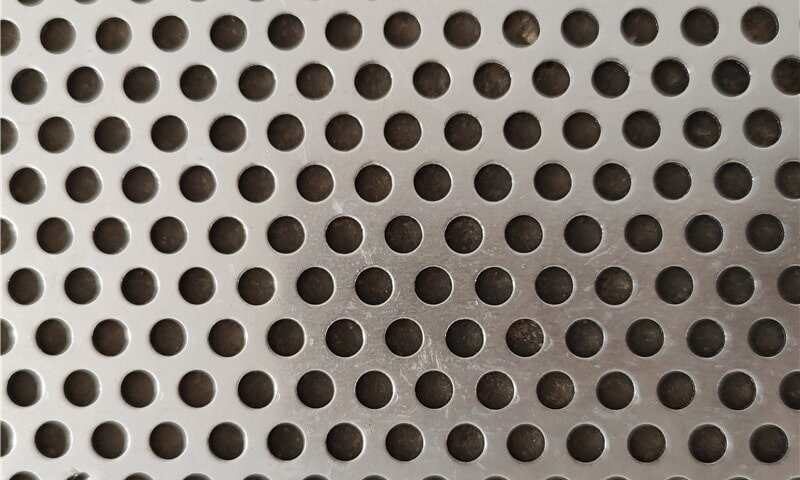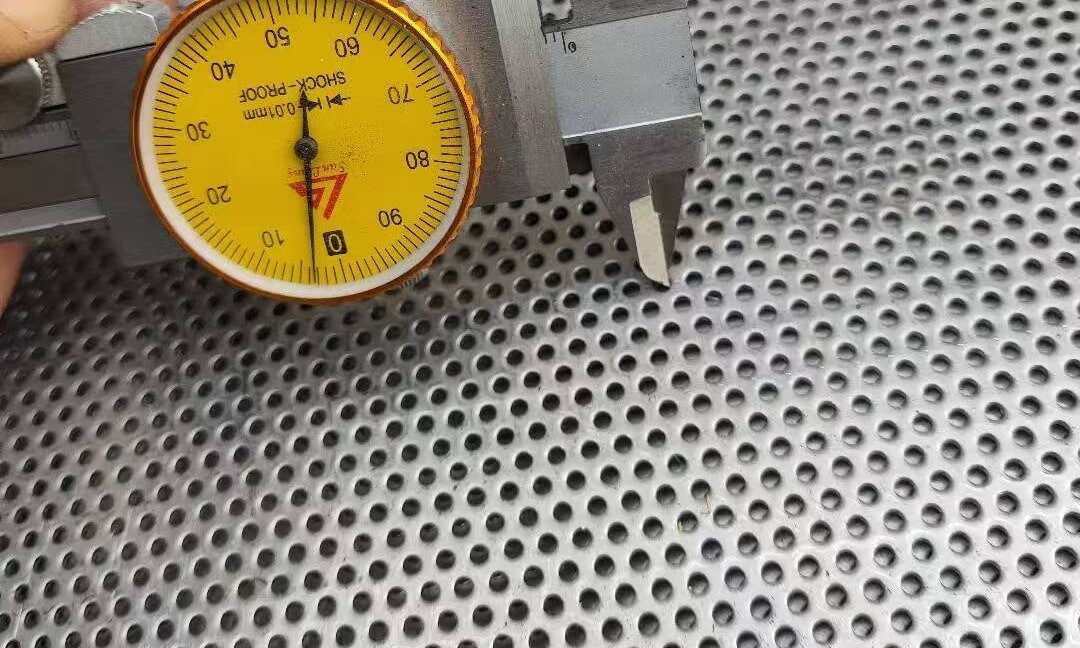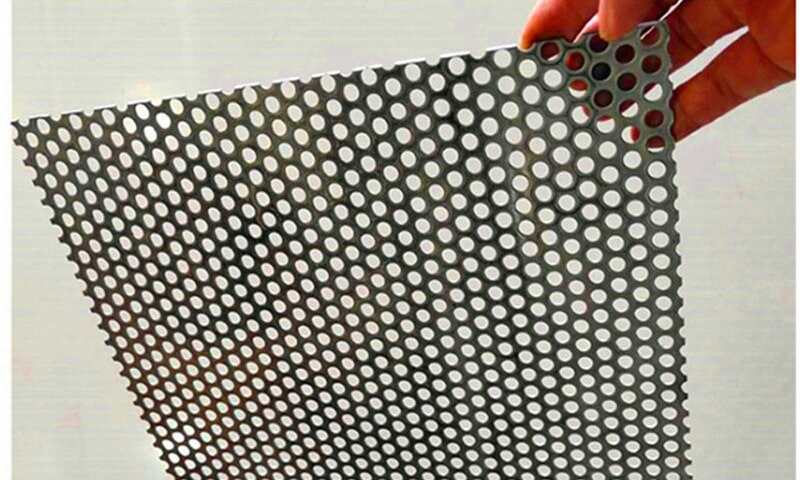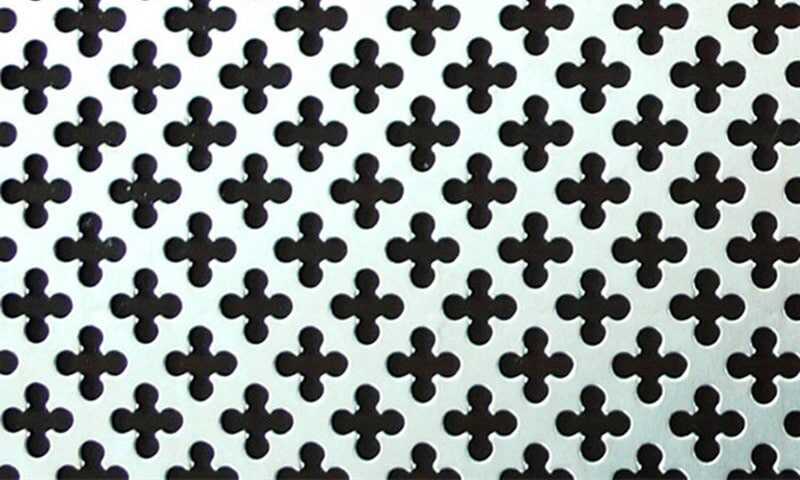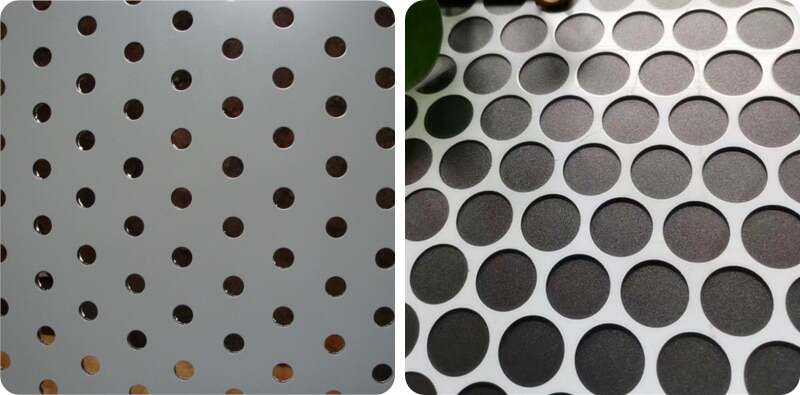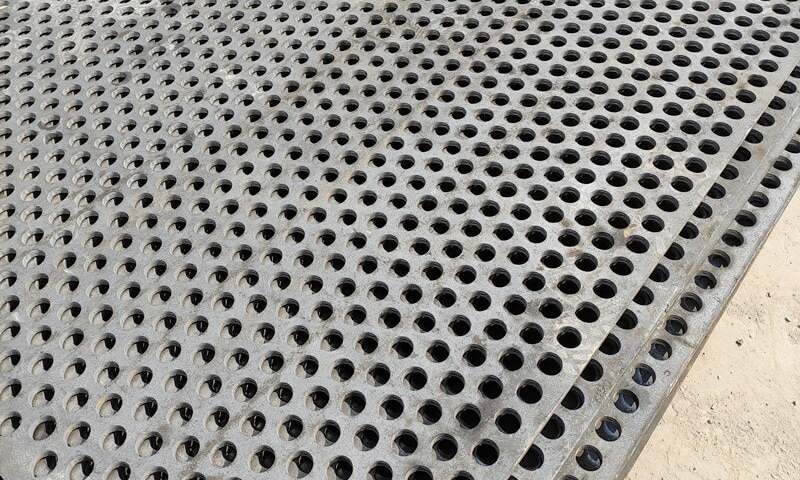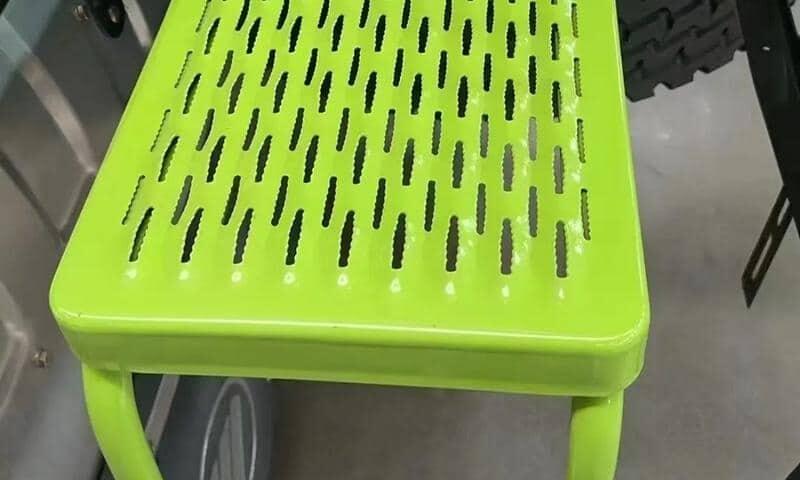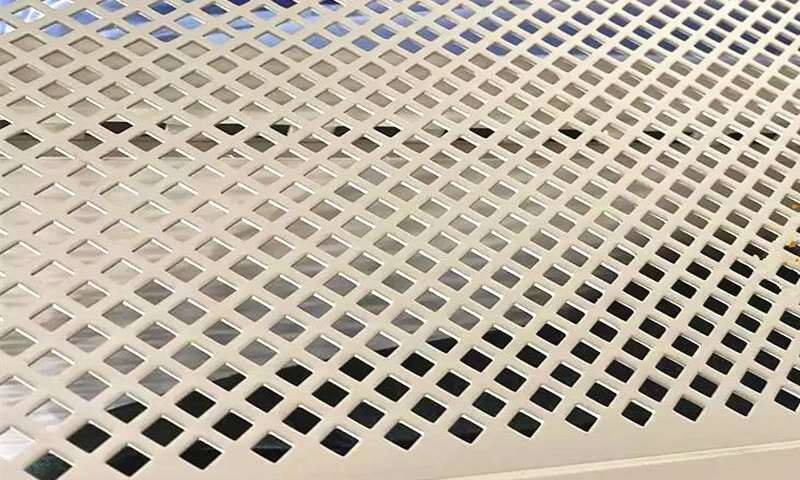Perforated metal with round holes is everywhere — from building façades and speaker grilles to safety guards and filtration panels. One small dimension that has a disproportionate effect on both how strong a panel is and how much light or air it lets through is the pitch: the center-to-center spacing between neighboring holes. This article explains, in practical terms, why pitch matters, how to balance strength and openness, and what to watch for when specifying or ordering a custom panel.
What we mean by “pitch” and why it matters
When people talk about pitch they usually mean the center-to-center distance between adjacent round holes. Pitch works together with hole diameter and sheet thickness to determine two critical outcomes:
- Remaining metal between holes (ligament) — this rules the panel’s tensile strength, stiffness, and resistance to deformation.
- Open area (porosity) — the percentage of the sheet that is open controls light transmission, airflow, and acoustic transparency.
A smaller pitch (holes closer together) increases open area but reduces the ligament, which can weaken the panel. A larger pitch makes for a stronger panel with less openness. Designers often describe this as a trade-off between strength and transparency.

How pitch affects structural strength
Strength comes from the metal left between holes. Two practical rules of thumb:
- Ligament width matters more than hole diameter alone. If pitch = hole diameter, the ligament is essentially zero and the sheet will be very weak. If pitch is substantially larger than the hole, the panel behaves more like a continuous plate.
- Thickness multiplies strength. For the same pitch and hole size, a thicker sheet will be stiffer and carry more load.
There are two common hole layouts to consider:
- Square (straight) pitch — holes aligned in rows and columns. This layout is simpler to measure and manufacture.
- Staggered (triangular/hexagonal) pitch — holes are offset in alternating rows. This arrangement usually gives a higher open area for the same hole size and pitch while preserving slightly better structural performance because the metal path between holes is more distributed.
To give a concrete feel for open area (without getting lost in math): a 10 mm hole on a 15 mm square pitch yields about 34.91% open area, while the same hole and pitch in a staggered layout gives roughly 40.31% open area. Those differences can be decisive when you need both visibility and strength.
How pitch affects light, airflow, and acoustic transparency
Open area (which the pitch strongly influences) directly controls how much light and air passes. Some practical pointers:
- Light transmission: Increasing pitch or hole diameter increases visible light that gets through. For façade or decorative uses, aim for an open area that delivers desired daylight while balancing solar control.
- Airflow and filtration: For screens and filters, smaller pitch and smaller holes can trap particulates but reduce flow rate. Larger pitch increases flow but lowers filtration efficiency.
- Acoustics: Perforated panels used in acoustic absorbers rely on open area plus backing materials; a higher open area usually increases absorption at certain frequencies but must be tuned with cavity depth and material.
When you need to specify a target (for example, “we need ~35% open area”), we can pick a combination of hole diameter, pitch, and layout (square vs. staggered) to hit that target while keeping enough ligament for structural needs.
Practical selection tips — balancing pitch, diameter, material, and thickness
- Start with the application. If the panel supports loads or serves as a safety guard, prioritize strength (larger pitch or thicker material). If visibility and airflow matter more, prioritize open area (larger holes or staggered pitch).
- Use staggered pitch for higher openness without sacrificing as much strength. Staggered patterns often let you reach the same open area with slightly better load distribution.
- Choose material with mechanical needs in mind. Stainless steel gives higher yield strength and corrosion resistance for thinner gauges; aluminum is lighter but has different stiffness. Consider stainless steel perforated sheet and aluminum perforated panel options depending on environment.
- One-off vs. bulk: Because we offer custom one-piece starts, you can test a prototype panel and then scale to production. For architects, this flexibility lets you fine-tune pitch and hole size on the actual installation.
- Don’t forget finishing and edge work. Edges, flanging, and secondary forming change how the sheet behaves under load.
If you already have an idea of hole diameter and open area, we can quickly suggest pitch and layout choices that meet both structural and transparency goals.
Common use cases and recommended starting points
- Decorative façade panels (visual emphasis + daylight): staggered pitch, hole diameters between 6–12 mm, open area 25–45%. See sample: round hole perforated metal sheet.
- Speaker grilles & electronics: small holes, tight pitch, thinner material to balance acoustic transparency and protection — consider micro-perforated sheet.
- Safety guards & gratings: larger ligament, thicker plates, possibly Perforated Safety Grating or heavy-gauge high-manganese perforated panel for wear resistance.
- Architectural sunshades: calculate desired solar reduction, then pick hole diameter/pitch that reaches it while keeping wind loads in mind; stainless or coated galvanized options often work best — see galvanized perforated metal.
Final checklist before ordering
- Target open area (as %).
- Required mechanical strength or load capacity.
- Preferred hole layout (square vs. staggered).
- Material and thickness (stainless, carbon steel, galvanized, aluminum, high-manganese, etc.).
- Quantity and finish (blanking, powder coating, plating).
- Will the panel be formed or bent after perforation?
If you provide those items, we can propose a few sample specs that meet your needs and include cost estimates.
Call to action
Want a few quick sample specifications based on your project? Email a brief of the application, desired open area (or desired light/air %), preferred material, and any load or size limits to info@perfsheet.com — we’ll recommend 2–3 practical pitch/hole/thickness combinations and sample drawings you can use in your tender or design documents.


